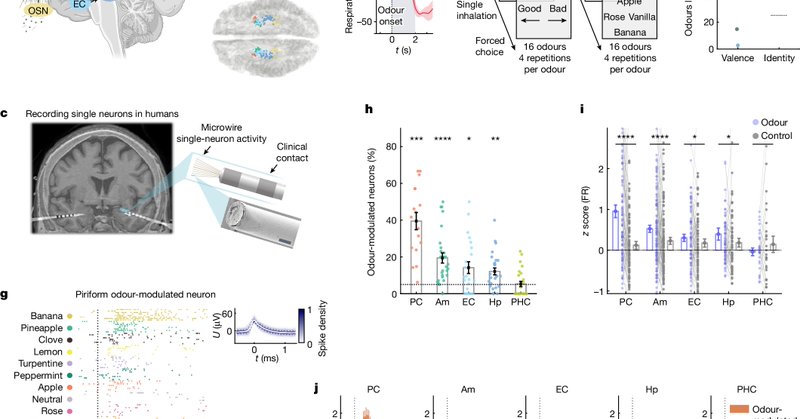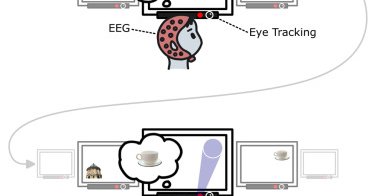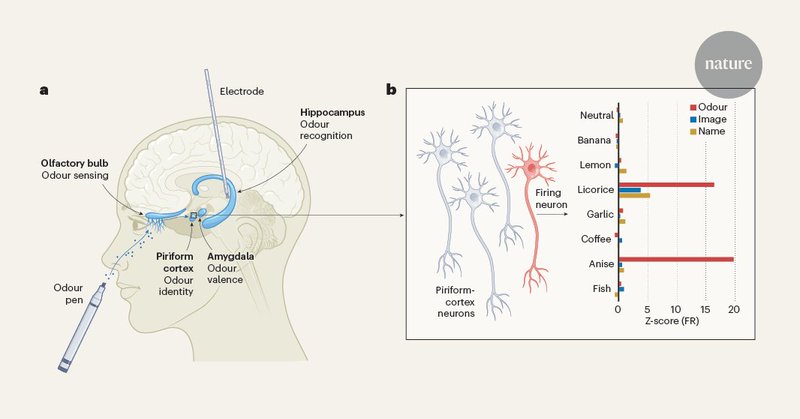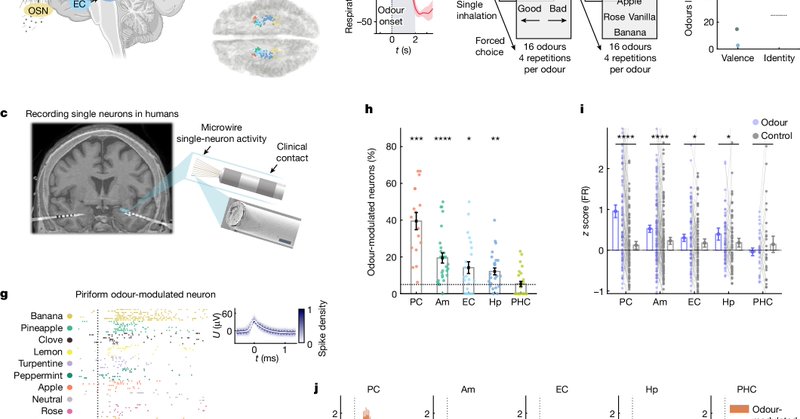
Marcel Kehl
@MS_Kehl
Followers
82
Following
133
Media
5
Statuses
24
Postdoctoral researcher at the Staresina Lab in Oxford, working on sleep, memory, and olfaction
Joined April 2022
1/7: We are excited that our paper "Single-neuron representations of odours in the human brain" was published today in @Nature. @humansingleunit,@RWTH @UniBonn, @MarcSpehr, @katohla, @UniofOxford, @OxNeuro, #Olfaction Link:
nature.com
Nature - Human piriform and mediotemporal neurons encode odours, and signal how we perceive, rate and identify scents.
6
16
62
Semantic Tuning of Single Neurons in the Human Medial Temporal Lobe https://t.co/aw80KUPrHR
#biorxiv_neursci
biorxiv.org
The Medial Temporal Lobe (MTL) is key to human cognition, supporting memory, emotional processing, navigation, and semantic coding. Rare direct human MTL recordings revealed concept cells, which were...
0
2
15
Sleep spindles can be experimentally moved across the brain! In our new study, @thom_jude shows how spindles during sleep track cortical hot spots created during wake with transcranial electrical stimulation. https://t.co/Jp9VWWkr4R
0
18
41
From learning to memory-guided action - new work led by the truly outstanding @BuchelPhilipp
https://t.co/WS8pc5s1wd
0
14
46
Proud of my first contribution to memory research: “Brain and eye movement dynamics track the transition from learning to memory-guided action” out now in @CurrentBiology, great team effort together with @randomwal @MS_Kehl & @BStaresina
cell.com
This study reveals how the brain dynamically shifts from learning to memory-guided behavior. Büchel et al. use electroencephalography (EEG) and eye tracking in a spatiotemporal learning task to show...
2
7
20
How do human brains process odor-related information? a @nature paper identifies neurons that encode the word, image, and perception related to specific smells. Congratulations @humansingleunit @MS_Kehl @MarcSpehr et al on this great work!
nature.com
Nature - Human piriform and mediotemporal neurons encode odours, and signal how we perceive, rate and identify scents.
1
12
59
Weiterer Schritt zur Entschlüsselung des Riechens: Forschende von #RWTH, @UniBonn und Universitätsklinikum Bonn untersuchten erstmals die neuronalen Mechanismen der menschlichen Geruchswahrnehmung 👃👍: ➡️ https://t.co/Vv7sC8xpa6
#Forschung #Nature
0
1
4
Nature research paper: Single-neuron representations of odours in the human brain
nature.com
Nature - Human piriform and mediotemporal neurons encode odours, and signal how we perceive, rate and identify scents.
1
19
73
This will be amongst the most important papers on olfaction and, frankly, “sensory” neuroscience.
1
3
17
New study from @MarcSpehr and @humansingleunit: Neurons in human primary olfactory cortex respond to high-level information, including odor-related images and words! “These aren’t odor signals that these cells are encoding; these cells are encoding concepts,” says @thefrankslab.
Unlike the primary sensory brain areas that process sights and sounds, the one that decodes scents also responds to other stimuli, such as images and words associated with an odor, according to a study published today in @Nature. By @avaskham
https://t.co/FNl8m7z0Ym
1
3
5
7/7: A big thanks to everyone who contributed to this project. Special gratitude goes to @humansingleunit, @MarcSpehr & @katohla for their invaluable support and to the excellent research enviroment @UniBonn, @UniklinikBonn & @UniofOxford @OxNeuro
nature.com
Nature - Human piriform and mediotemporal neurons encode odours, and signal how we perceive, rate and identify scents.
0
2
4
6/7: Presenting images matching each odor revealed explicit coding of visual information in the olfactory cortex, with individual neurons exhibiting chemosensory conceptual coding, e.g., in the form of a neuron responding to the smell, image, and written name of a banana.
1
0
2
5/7: Our recordings show how specific brain regions contribute to distinct aspects of odor processing, with amygdala neurons adjusting their firing based on personal odor preference, and hippocampal activity predicting participants' ability to correctly identify odors.
1
0
0
4/7: Repeated odor presentations reduce neuronal responses, showing repetition suppression and habituation. Notably, piriform neurons show a marked first-trial effect, responding significantly stronger to the first than the second presentation of the same odor.
1
0
2
3/7: Neurons in the piriform cortex, amygdala, hippocampus, and entorhinal cortex modulate their activity based on odors presented, and they respond stronger to actual odors than odorless controls. Population activity in these regions accurately predicts odor identity.
1
0
1
2/7: We recorded single-neuron activity in the human olfactory cortex and medial temporal lobe to study how neurons encode odor identity and valence, and contribute to odor identification and cross-modal integration.
1
0
2
Come by my poster LBA139 at #sfn2024 this morning if you are interested in “Brain and eye movement dynamics track the transition from learning to memory-guided action”. Work by @randomwal @MS_Kehl @BStaresina & me.
0
2
8
Hippocampal ripples during offline periods predict human motor sequence learning. Work led by the brilliant @PinChun_Chen.
biorxiv.org
High-frequency bursts in the hippocampus, known as ripples (80-120 Hz in humans), have been shown to support episodic memory processes. However, converging recent evidence in rodent models as well as...
0
13
43
















